Introduction – Best Ways To Dispose Of Cat Litter
As a responsible pet owner, proper disposal of cat litter is essential to maintain hygiene and reduce environmental impact. This article outlines the best ways to dispose of cat litter, the different types of cat litter, eco-friendly and sustainable disposal methods, and tips on managing litter waste responsibly. By making informed choices and adopting eco-conscious habits, cat owners can help reduce carbon emissions and support a sustainable lifestyle.

Types of Cat Litter and Their Carbon Footprint
Clay Litter
Clay litter is one of the most common types of cat litter. However, its extraction, transportation, and disposal contribute to carbon emissions and environmental degradation. Moreover, the sodium bentonite, a primary component in clumping clay litter, is acquired through strip mining, a process that has adverse environmental implications.
Clumping Litter
While clumping litter is convenient for pet owners, it comes with a similar set of environmental concerns as clay litter. Made from clay, it also contains sodium bentonite and involves the extraction process of strip mining. This process results in a high carbon footprint.
Biodegradable Litter: A Sustainable Alternative
Biodegradable litters offer a more eco-friendly option for cat owners. Derived from natural and renewable materials, these litters have a lower carbon footprint compared to clay-based alternatives. Some popular biodegradable litters include:
1. Corn-based – World’s Best Cat Litter
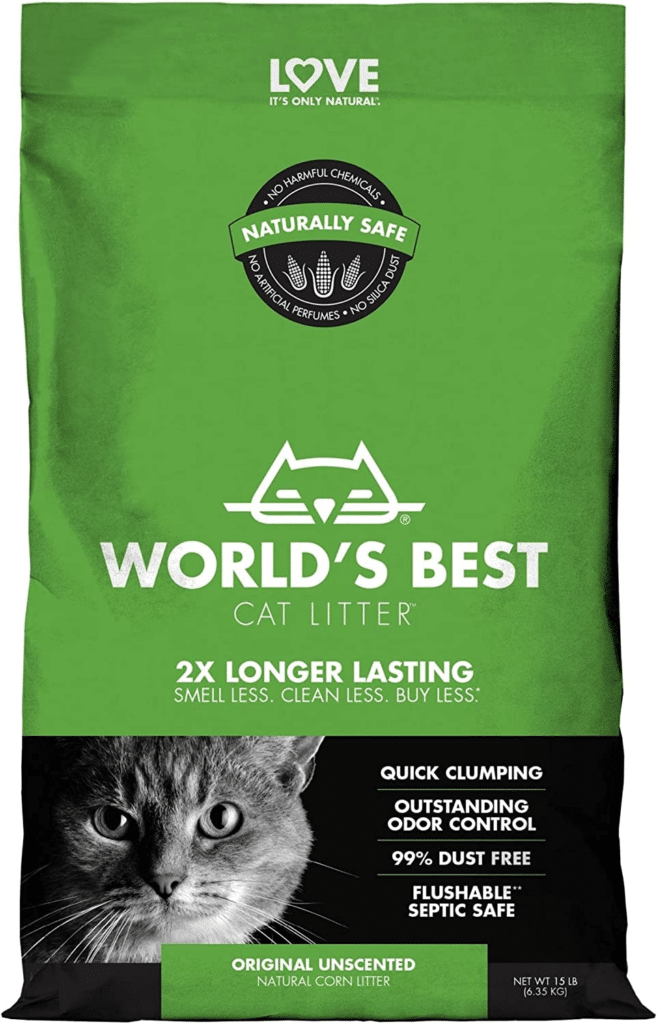
World’s Best Cat Litter is a 15-pound, eco-friendly cat litter made from all-natural corn. This unscented, wheat-free product offers exceptional odor control, quick-clumping, and easy-scooping properties, significantly reducing mess and cleanup time. Its unique formula is flushable, septic safe, and 99% dust-free, making disposal easy and minimizing tracking. Being lightweight, free of harmful chemicals, and artificial perfumes, it is pet, people, and planet-friendly, providing an effective and sustainable solution for cat litter management.
2. Wood-based – ökocat Natural Wood Cat Litter
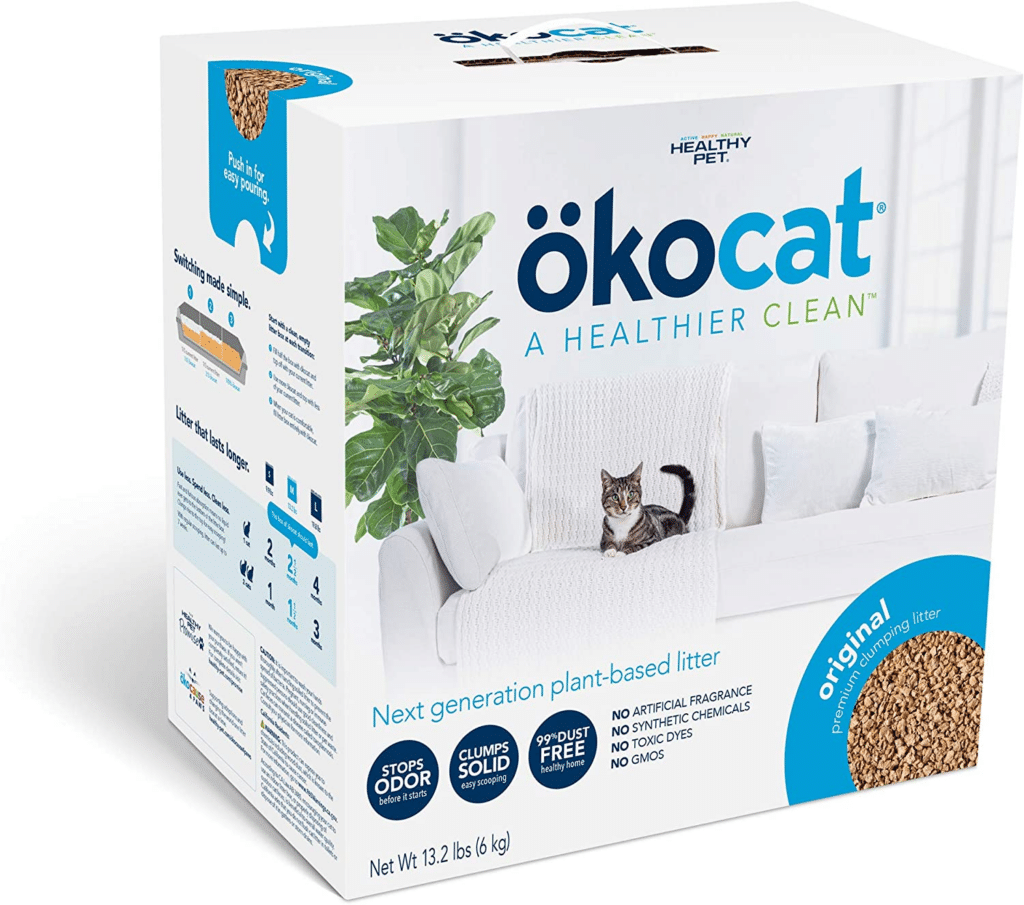
ÖKOCAT Natural Cat Litter is a 13.2-pound, premium clumping cat litter made from wood, providing an eco-friendly alternative to conventional clay litters. This unscented, allergen-free product offers great odor control by naturally inhibiting enzymes from producing ammonia, making it highly effective at maintaining freshness.
With a 99% dust-free formula, ÖKOCAT ensures a cleaner pour and a healthier home environment, reducing concerns about respiratory issues or mess. Free of artificial fragrances, synthetic chemicals, toxic dyes, and GMOs, this sustainable litter is not only biodegradable but also compostable. Compared to World’s Best Cat Litter, it’s made of wood instead of corn.
3. Paper-based – Purina Yesterday’s News Unscented Cat Litter
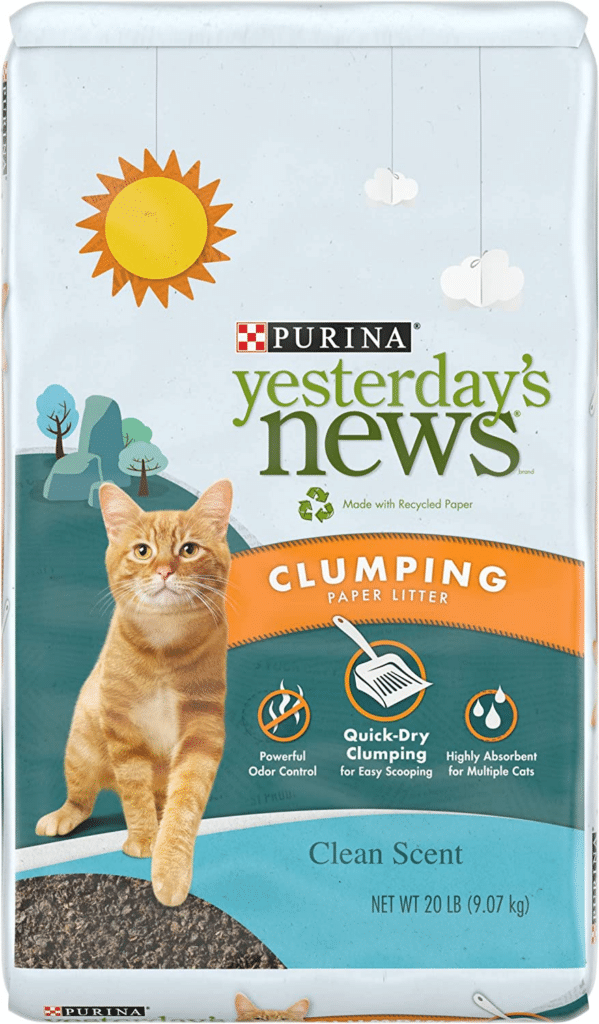
PURINA Yesterday’s News is a 20-pound cat litter made from recycled paper, offering an environmentally conscious alternative to traditional litters. This allergen-free product provides powerful odor control with a fresh, clean scent. Notably, it features quick-dry clumping for effortless scooping, simplifying litter box maintenance.
The significant advantage of this litter is its lightweight nature; 10 pounds of PURINA Yesterday’s News has the same volume as 20 pounds of clay clumping litter, contributing to its convenience. This sustainable product is manufactured in Springfield, MO, with eco-friendly, 100% recyclable packaging.
4. Other plant-based options – Naturally Fresh Walnut-Based Cat Litter
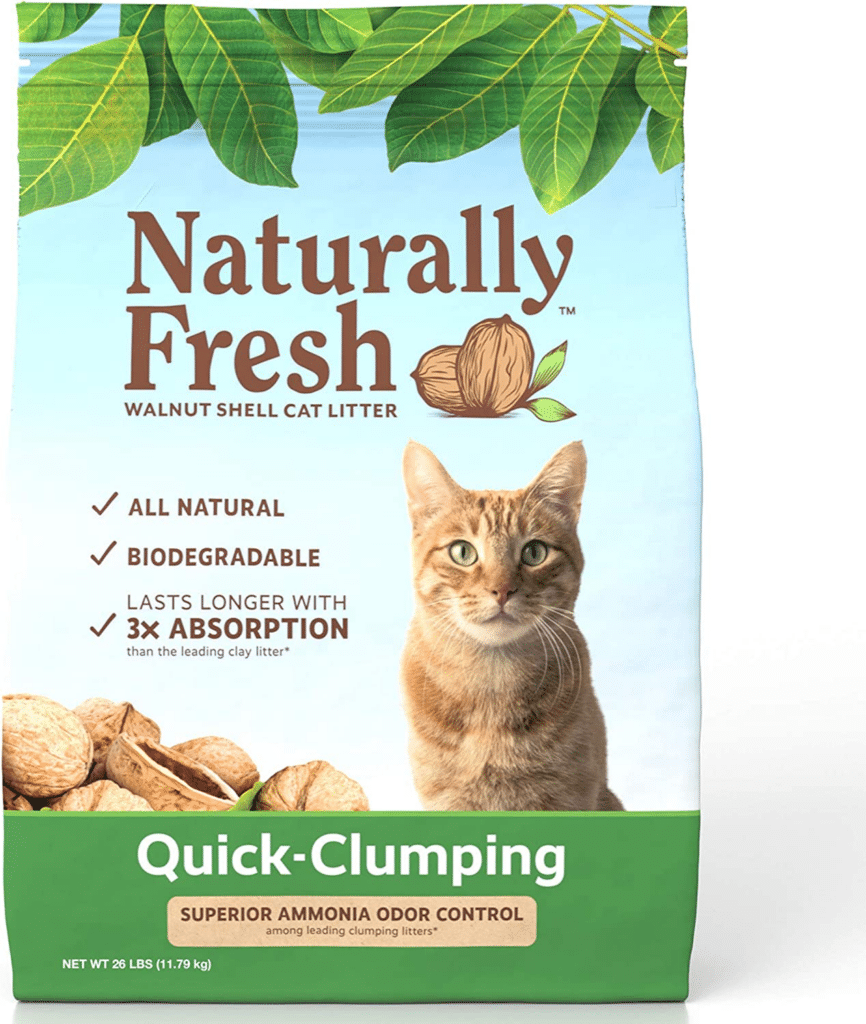
Naturally Fresh is a 26-pound cat litter, uniquely made from walnut shells. This unscented, wheat-free product provides a highly absorbent solution, with one bag equating to three bags of leading clay litter, demonstrating its efficiency and long-lasting properties. The product is virtually dust-free, differing from clay litters. Its non-stick nature prevents tracking throughout your house, keeping your space cleaner.
Disposal Methods For Carbon Reduction – Best Ways To Dispose Of Cat Litter
General Guidelines for Eco-Conscious Disposal
To reduce carbon emissions, pet owners should follow proper disposal guidelines. It is crucial to avoid flushing litter down the toilet, as doing so could cause water pollution and damage aquatic ecosystems.
Disposing of Used Litter and Cat Waste
Eco-friendly disposal options include using minimal-impact plastic bags and disposing of them in trash bins rather than flushing them down the toilet. Alternatively, biodegradable bags or reusable containers can be utilized for waste disposal.
Outdoor Disposal and Carbon Emissions
When disposing of litter outdoors, ensure it does not come into contact with water sources, as this could cause pollution and harm local wildlife. If possible, designate a specific area for cat litter disposal away from water sources and children’s play areas.
Alternative Disposal Methods for a Greener Lifestyle
Composting Cat Litter with Low Carbon Emissions
Composting certain types of biodegradable cat litter can be a sustainable option, especially for those with limited trash disposal options. However, it is essential to understand the risks associated with composting cat litter, such as the possible transmission of harmful parasites. Thus, pet owners should thoroughly research the composting process and take necessary precautions.
Eco-Friendly Cat Waste Disposal Systems
Several eco-friendly cat waste disposal systems are available in the market, such as the Litter Genie and the Litter Locker. These systems effectively trap odors and reduce plastic bag usage, making them a more sustainable option for managing cat litter.

Biodegradable Litter Disposal System: The Litter Genie system uses biodegradable bags to contain and neutralize cat waste. These bags could be made from corn or other plant starches that break down more quickly than traditional plastic. It features a sealing mechanism that traps odors within each bag until it’s time to dispose of it. The bags can be disposed of in regular trash or potentially composted, if local regulations allow it and if you use compostable cat litter. Its continuous liner design minimizes plastic waste by only using as much bag as needed.
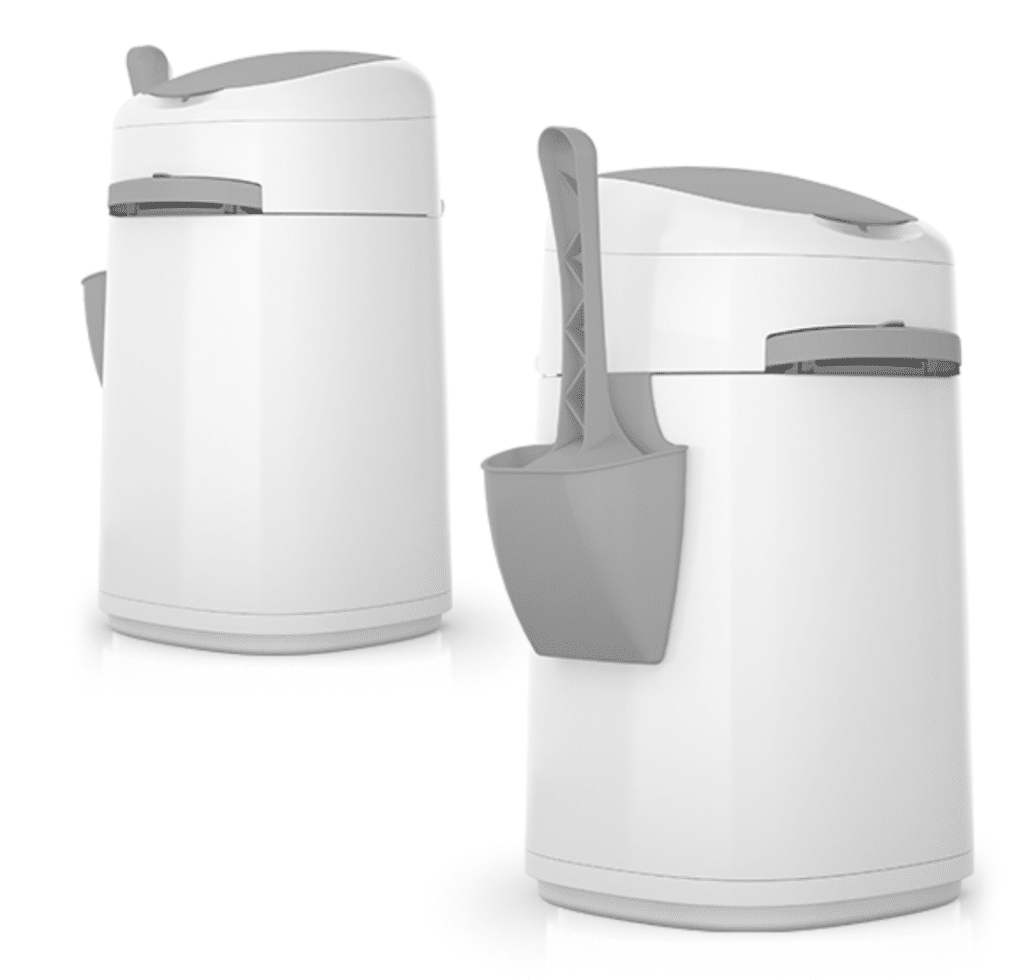
Waste-to-Water Disposal System: The Litter Locker is an innovative cat waste disposal system that could convert cat waste into a safe, eco-friendly effluent that can be safely flushed down the toilet. It employs a natural, enzyme-based process to break down the waste, eliminating the need for plastic bags. Some models feature a built-in, self-cleaning mechanism for added convenience. This system requires a connection to your household water supply and drain.
Tips for Reducing Carbon Footprint through Litter Waste Management
- Scoop your cat’s litter box daily to minimize waste generation and maintain optimal hygiene.
- Choosing the Right Litter to Minimize Environmental Impact
- Select an eco-friendly and biodegradable litter to help reduce the carbon footprint of cat waste disposal.
- Maintaining a Clean Litter Box for Optimal Waste Management
- Regularly clean and replace your cat’s litter to manage waste effectively and maintain a healthy, eco-friendly home environment.
- Encouraging Eco-Friendly Habits that Support Sustainable Living
By adopting sustainable habits, cat owners can reduce their pets’ environmental impact and contribute to a greener, cleaner planet.
Conclusion – Best Ways To Dispose Of Cat Litter
Responsible cat litter disposal and carbon reduction are essential components of sustainable living. By making informed choices and adopting eco-friendly practices, pet owners can minimize their environmental impact and support a sustainable lifestyle. Stay committed to a greener future and choose eco-conscious cat litter and disposal methods.
